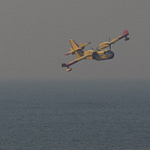Dave the Diver is a genuine hit. The fishing and sushi restaurant management adventure has already rocketed to the top of my game of the year list, and it’s one of the most-played games on Steam. Now that it’s on Nintendo Switch, it’ll find even more fans.
If you’re thinking about diving in yourself, we’ve got some advice, because despite its cute pixelated looks and casual, cozy vibes, there’s quite a lot going on in Dave the Diver beyond just catching fish and waiting tables. You’ll want to avoid some pitfalls like selling off resources you’ll need later, avoiding wasting ingredients in your restaurant, learning the best way to catch fish, and how to use your restaurant staff to get the best results.
Here are a few helpful tips if you’re planning to strap on some flippers and dive into Dave the Diver.
Save, don’t sell, all that weird junk
(Image credit: Mintrocket)
As you dive you’ll not only collect fish but stuff. Seashells, starfish, bits of wood and rope and scrap iron, hunks of ore and other minerals. Even harpooning fish will occasionally give you extra resources like a jellyfish tentacle, a shark’s tooth, or a puffer fish’s poison bladder. When you’re running low on cash you might be tempted to sell some of this collected junk to Cobra, especially when most of it doesn’t seem to have a purpose in the early hours of the game.
Don’t sell your stuff! Hang onto every bit of junk you collect, even though it might be a long while before you use them. When you get into weapon crafting and improvements, you’ll need a bunch of this junk and you don’t want to sell it now only to have to go find it again later. A few items, like silver bowls, pearls, goldfish statues, will say in their descriptions that they’ll fetch a good price in Cobra’s shop—those are the only things you should sell, because everything else you’ll probably need.
Use “Auto Supply” on menu items to avoid ingredients being thrown away
(Image credit: Mintrocket)
Early on your chef Bancho will suggest using “auto supply” when setting your menu for the evening, but he doesn’t explain what it means, and it’s extremely important. When adding a dish to the menu you can select how many of each dish you want to serve. But if you select, for example, 12 units of sawshark sushi, and you only wind up serving 6 of them that evening, the remaining 6 will be thrown away. That’s wasteful, especially considering what a pain in the ass those sawfish are to hunt.
Instead, select a single serving of an item, and then select Manage next to the menu item. Then select Auto Supply. It means it’ll only prepare that dish once it’s actually been ordered by a customer, so you won’t wind up wasting ingredients at the end of the night.
Dispatch staff to get seasonings
(Image credit: Mintrocket)
One of the early-game bottlenecks are seasonings like soy sauce, salt, olive oil, and mayonnaise. You can find most of these seasonings in the red pots as you’re diving along the reef, but you’ll only find one at a time. The good news is you can send your restaurant staff out on errands to collect these sauces. It’ll keep them away from the restaurant for a full day, but when they return they’ll have the seasoning you dispatched them for.
Don’t just send them out at random, though. Each of your staff has a “Procure” attribute score, and the higher their score the more units of seasoning they’ll return with.
Nets and tranquilizers are the best ways to get high quality ingredients
(Image credit: Mintrocket)
Fishing can be a violent business, and Dave will eventually wind up armed with an assortment of deadly weapons including grenade launchers, proximity mines, and sniper rifles. But the more you brutalize those angry sharks and deadly manta rays, the lower quality their meat will be for your restaurant.
Whenever possible, hunt using the hush dart, a tranquilizer pistol that can put fish to sleep and allow you to capture them without damage. The net gun is great, too: it nabs multiple small fish without harming them.
That’s for small creatures, but what about the bigger ones? The triple axel is a gun that fires three bullets at once, but it can be upgraded to fire three tranquilizer darts instead—great for making sharks and other large creatures go to sleep quickly so they can be captured by your salvage drone. And before you dive, always see if Cobra is selling a steel net sensor trap which can capture large fish alive. Going non-lethal isn’t always an option, but when you can manage you’ll wind up with better ingredients.
Check your fish farm every day
(Image credit: Mintrocket)
Before long you’ll discover a nice shortcut to diving to find all your ingredients: opening your very own fish farm. Once you’ve unlocked the fish farm you’ll start collecting fish eggs when you hunt, and those eggs will hatch at your farm. When they’re grown, you can start sending those fish to your restaurant.
But keep a close eye on your fish farm! Once you have two of the same kind of fish, they will start breeding quickly, and farm capacity will fill up preventing more fish from hatching. Unlike most things in Dave the Diver, you won’t get warned via an app or notification, you’ll have to visit the farm to see which of your tanks are over capacity. Visit your fish farm every day without fail before you open the restaurant to send surplus fish to your kitchen.
Enhance your dishes
(Image credit: Mintrocket)
When it comes to your menu, you want to get the most bang for your buck. An elaborate dish with multiple ingredients will earn more per dish, but basic sushi will be easy to serve to dozens of customers. As long as you’ve got a few fancy dishes and a bunch of general menu items, you’ll do fine. So what you want to focus on is enhancing the dishes you serve.
Not only does it result in some awesome cutscenes, enhancing meals will increase the taste and price of your menu items. While it does sacrifice ingredients to enhance meals, it’ll pay off with happier customers and more money. Most importantly, enhancing dishes is actually required if you want to level up your restaurant by raising Dave the Diver’s best taste ranking.
Let your serving staff handle as much as possible
(Image credit: Mintrocket)
Dave is a great guy and a decent fisherman, but there’s no denying he’s a terrible server. Don’t let your customers down by having Dave slowly distribute sushi: train up your staff as quickly as possible and soon they’ll learn to not just deliver food but pour drinks, clean the counter, and refill the wasabi. And they’ll do it much better than you can. We’ve got a guide to Dave the Diver’s best staff members so you’ll know who to hire.
Each time you train staff, keep an eye on which skills they’ve unlocked and what they’re best at. Make adjustments until you’ve got someone great at delivering food and making drinks, and someone good at cleaning counters and making wasabi. Then you can just pitch in to help. Let’s face it, Dave’s a diver, but he’s no waiter.











